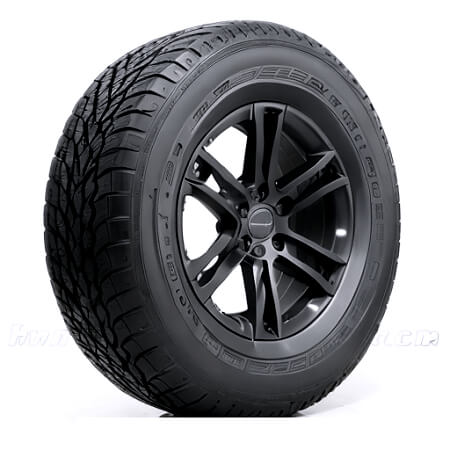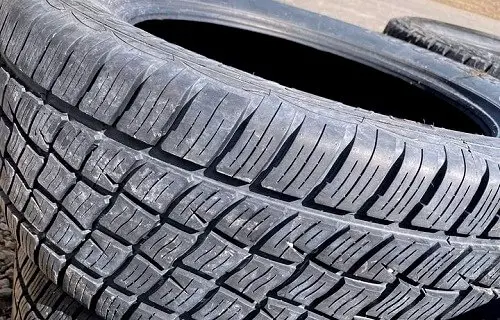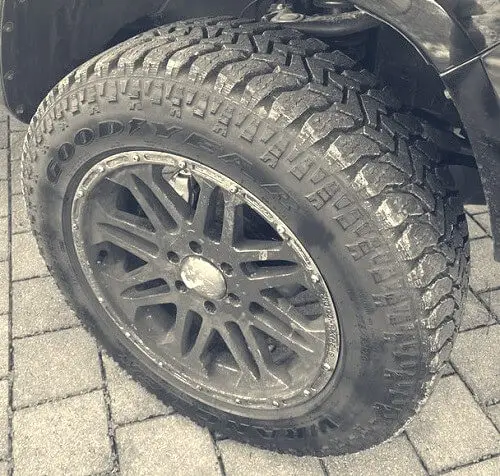Tire Size 275/60r20 vs 275/65r18

Are you considering swapping out your vehicle’s 275/60R20 tires for a set of 275/65R18s? While both tire sizes may look similar at a glance, there are some key differences to be aware of before making the switch.
- Slightly softer ride due to taller sidewall height
- Minor reduction in steering responsiveness and handling precision
- Negligible change in fuel economy under real-world conditions
- Speedometer may read slightly slower than actual speed
- Increased protection against tire damage in rugged terrain
275/60r20 vs 275/65r18
The main difference between 275/60r20 and 275/65r18 tires is the sidewall height.

Fitment Guide
The overall diameter of the 275/60r20 is 2.8% larger than the 275/65r18. Replacement tires should be within 3% of the original size to prevent clearance or speedometer issues.
So the 275/65r18, being under 3% smaller, can directly replace a 275/60r20 without modifications. Going the other direction, a 275/60r20 could also feasibly replace a 275/65r18.
Gas Mileage
With a marginally smaller contact patch and lower resistance, the 275/65r18 tire should be slightly more fuel-efficient than the 275/60r20.
Less rotational mass from the shorter sidewall may also improve efficiency. This difference is minor but can add up, making the 275/65r18 a sensible choice for commuters focused on fuel economy.

Ground Clearance
The 275/60r20 provides 0.92 inches (23.3 mm) more ground clearance – beneficial for off-roading but potentially causing speedometer error.
The lower clearance of the 275/65r18 increases the risks of scrapes but maintains accurate speedometer readouts.
Ride Comfort
The taller 70 series sidewall of the 275/65r18 absorbs bumps better, likely providing a smoother ride than the 60 series 275/60r20.
More flexible sidewalls generally translate to improved ride quality over uneven pavement.
Aesthetics
Visually differentiating these tire sizes is challenging. The 275/65r18 will look slightly more “stretched” thanks to a taller sidewall.
This subtle change suits some vehicles, giving an aggressive stance. Subjectively, a moderately tall sidewall matches trucks aesthetically.

Handling & Stability
The 275/60r20’s shorter sidewalls enable sharper handling and quicker turn-in response on pavement than the 275/65r18.
But both remain stable, making either suitable for performance driving. Off-road, the 275/65r18’s extra flex lends it more traction.
Noise & Vibration
Expect marginally more road noise and vibrations from the 275/60r20 as its stiff sidewalls transmit more energy into the cabin.
Conversely, the 275/65r18 better isolate occupants from noise and shakes thanks to more sidewall cushioning.
Durability & Wear
Due to its rigid construction, the lower-profile 275/60r20 may exhibit slightly more even treadwear.
But both tires utilize rugged materials and designs engineered for longevity and resilience. Either should deliver years of reliable service.

Adverse Conditions
Foul weather traction is comparable between the two – wider tires like the 275/60r20 can struggle for grip on snow and ice but perform well off-road. The sizing difference doesn’t greatly impact all-weather capabilities.
Speedometer Difference
At the same actual speed, the 275/65r18 causes speedometers to read 0.66 mph slower than 275/60r20 tires.
This discrepancy emerges from the smaller overall diameter. It’s a modest difference that likely won’t hugely impact driving.
What is the Difference Between 275/60R20 and 275/65R18?
The primary differences between 275/60R20 and 275/65R18 tires are in their sidewall height and overall diameter.
The 275/65R18 tires have a taller sidewall and a slightly smaller diameter compared to the 275/60R20 tires.
Can I Use 275/65R18 Instead of 275/60R20?
Yes, you can use 275/65R18 tires instead of 275/60R20 tires. The diameter difference between the two sizes is within the acceptable range of 3%, so the 275/65R18 tires can be used as a replacement without major modifications.
How Much Taller Is a 275/60R20 Tire Than a 275/65R18?
A 275/60R20 tire is actually 0.92 inches (23.3 mm) taller than a 275/65R18 tire.
The overall diameter of the 275/60R20 tire is 32.99 inches (838 mm), while the 275/65R18 tire has a diameter of 32.07 inches (814.7 mm).
Our Observations
After analyzing the differences between 275/60R20 and 275/65R18 tires, we’ve found that the switch can offer some benefits, particularly for those who enjoy off-road adventures.
The taller sidewall of the 275/65R18 tires provides improved ground clearance, traction, and durability in rugged terrain.
However, for primarily on-road use, the differences in ride comfort, fuel economy, and handling are likely to be minimal and may not be noticeable to most drivers.
Ultimately, the decision to switch tire sizes should be based on your specific vehicle, driving habits, and personal preferences.
Always consult with a trusted tire professional to ensure proper fitment and optimal performance for your unique needs.

Meet Caitlin McCormack, a Tire Size Expert and Blogger Passionate About Everything Related to Tires. With Years of Experience in the Tire Industry, Caitlin Has Become an Expert in Tire Sizes and Their Impact on Vehicle Performance.
